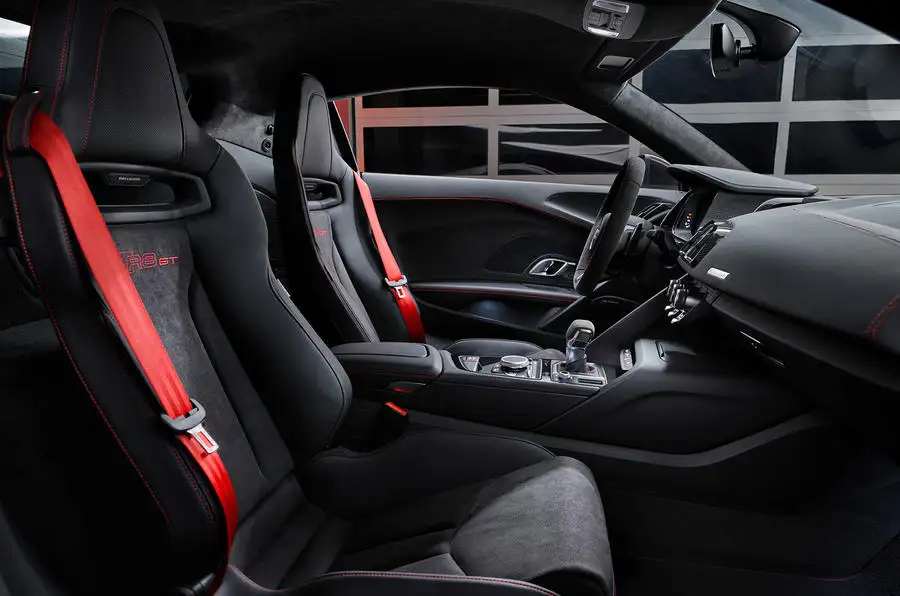
The R8 is one of only two cars on sale today with a V10; production will come to a close next year.
Audi will end the production of the R8 supercar next year as the carmaker looks towards electrification of the Audi Sport brand.
- Audi R8 GT RWD and TT RS Iconic Edition introduced
- Both models to get EV replacements in future
Audi R8 and TT to go out of production
The Audi R8 and Audi TT (also bowing out in 2023) have been pivotal in establishing Audi Sport as a bona fide competitor for the likes of BMW M and Mercedes-AMG, serving as low-volume but highly recognisable halo models of a line-up that includes some of the bestselling performance cars on sale today.
Their withdrawal is especially significant because of the rarity of their engines. The R8 is one of only two cars on sale today with a V10 and the five-cylinder turbo unit in the Audi TT RS is the last of its kind in series production.
As electric power beckons for the cars’ successors, the Audi R8 GT RWD and Audi TT RS Iconic Edition have been introduced as highly exclusive commemorative variants – each the final entry into its series. The former is the last outing for Audi’s venerable atmospheric V10 (the last of this configuration still in series production) and is at once the most powerful rear-driven Audi yet, along with being the firm’s most expensive production car. It’s the final new variant of the mid-engined supercar as we know it, production of which will come to a close next year.
Output from the 5.2-litre unit – shared with the Lamborghini Huracán, which is also due to sign off next year – has been boosted to 620hp; 20kg of weight has been shaved off; and the gearbox has been tweaked for quicker shifts, taking the GT from 0-100kph in just 3.4sec and on to 320kph.
Plus, there’s a new seven-stage rear traction control system that can be adjusted for the desired compromise between accuracy and flamboyance. The so-called Torque Rear Drive mode appears for the first time on the new GT, allowing for a “little slippage” in setting one and “a lot of slippage” in position seven. It also distributes power automatically across the rear axle according to the road conditions and driving scenario, using data from sensors on the wheels, accelerator pedal, steering rack and ECU.
Audi also highlights a weight reduction of roughly 20kg – to 1570kg at the kerb – courtesy of bespoke lightweight 20in wheels (optionally wrapped in hardcore Michelin Sport Cup 2 tyres), ceramic brake discs, a carbonfibre-reinforced plastic front anti-roll bar and aluminium coupling rods.
As with the GT edition of the previous-generation R8, the new car is painted in matte Suzuka Grey as standard and is marked out from the standard model by black badging, carbon trim, red seatbelts, an Alcantara diamond headlining and a build plaque in the centre console.
What’s next for Audi’s two-seat sportscars?
As previously reported, Audi is set to replace the R8 with a radically redesigned electric supercar to crown its new era line-up of sports cars. The EV is on track for a mid-decade arrival, and while details remain scarce, our sister publication Autocar UK understands it will hold true to the R8’s general formula, with a striking two door silhouette, more power than any other Audi and a lofty price reflecting a still largely manual build process.
Audi sold the first and the second generations of the R8 supercar for a limited period in India. The R8 facelift, however, was not introduced here.
Also see:
New Audi R8 V10 Plus review, test drive
Audi RS e-tron GT is quickest accelerating production car in India
